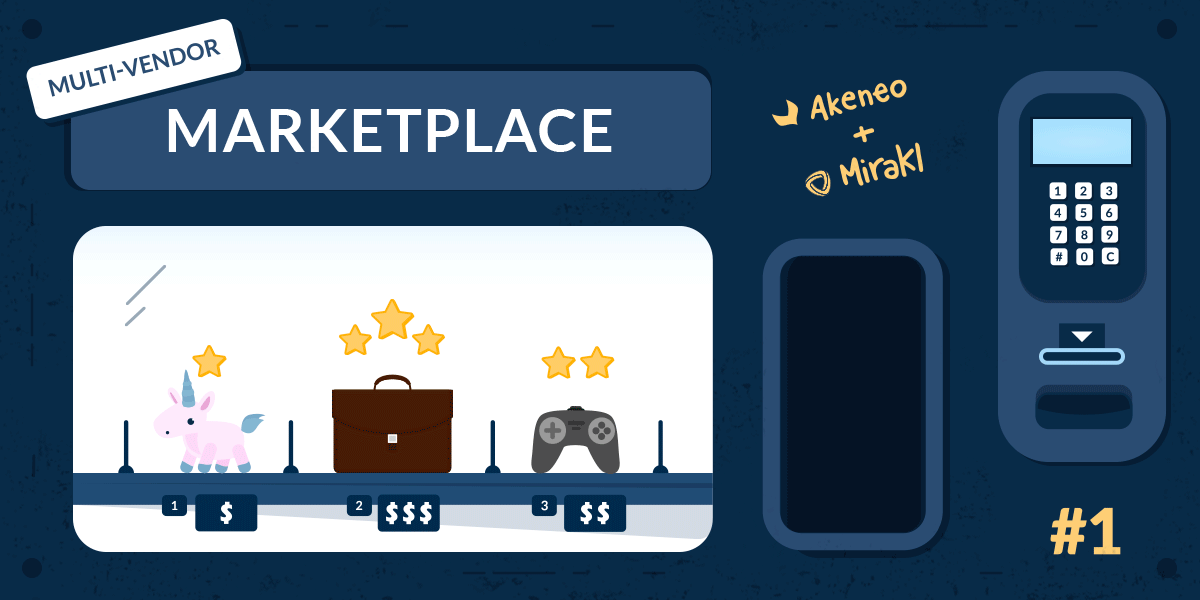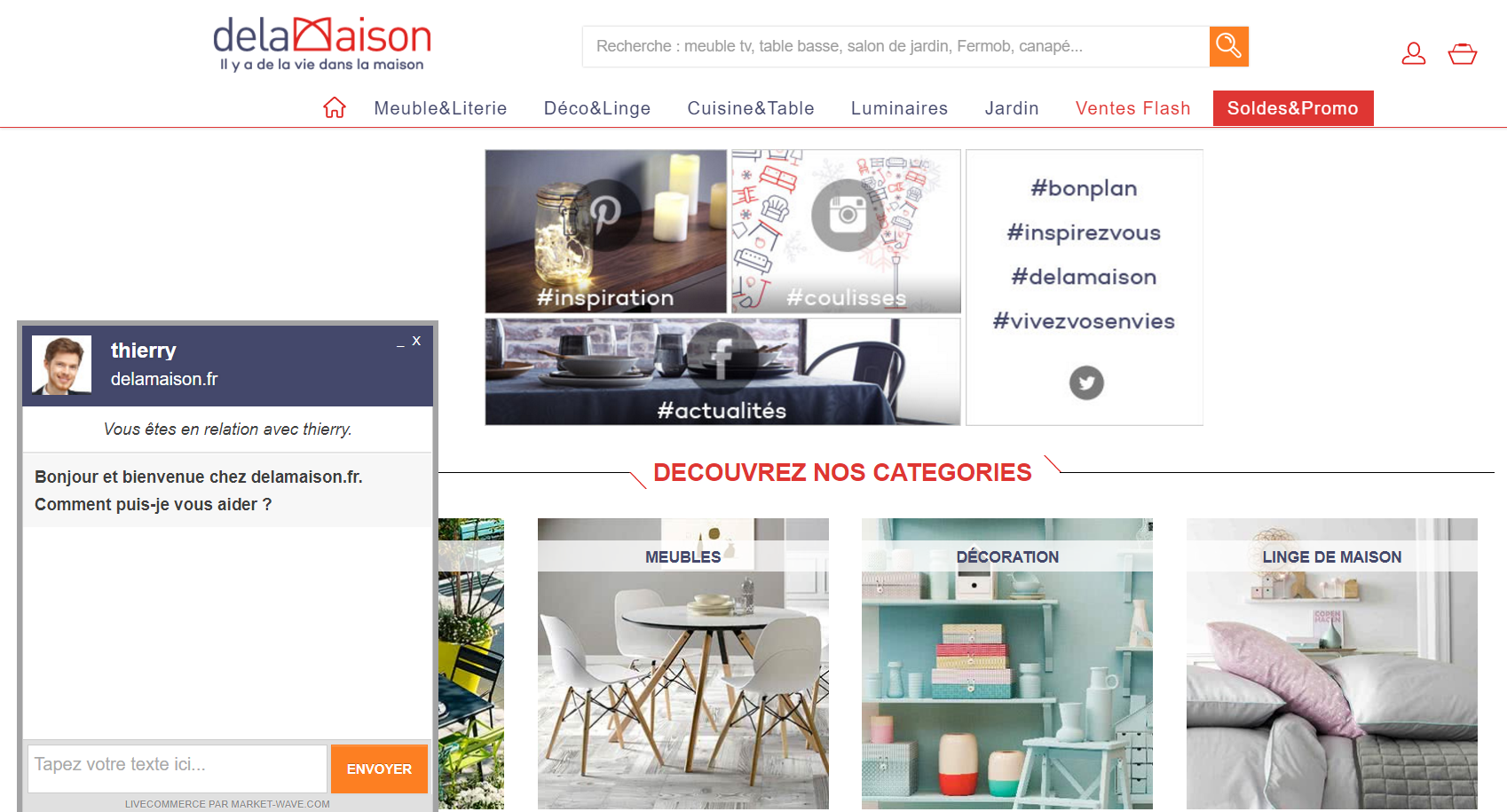Amazon and Alibaba have created massive marketplaces where buyers can purchase virtually anything they want from any location. To compete, many compan...

Amazon and Alibaba have created massive marketplaces where buyers can purchase virtually anything they want from any location. To compete, many companies are looking to expand their product assortment and geographic reach by incorporating multi-vendor marketplaces into their existing eCommerce stores. There are risks to this strategy but most experts think the potential benefits outweigh them. For an in-depth look at both the pluses and minuses of a multi-vendor marketplace strategy, read on…
The biggest competition in today’s online eCommerce market is the massive multi-vendor marketplace. In the early days, the big A’s – Amazon and Alibaba – helped to increase online shopping, getting consumers and business customers alike accustomed to buying online. Their victories were your victories.
But today, that balance has shifted. Now, eCommerce executives need a strategy to compete with – or risk becoming little more than suppliers to huge multi-vendor marketplaces. The Big A’s compete on product, price, and volume, offering a large range of product options through a product inventory that is almost impossible to match. Amazon accounted for the majority (53%) of the growth in US e-commerce sales for last year…. and that phenomenal growth was largely based on the marketplace model, where third-party sellers offer products alongside Amazon’s own.
Tactics to best compete with Amazon and Alibaba are on the minds of many eCommerce executives these days. As well they should be.
To remain competitive, many large and mid-size companies need smarter approaches to merchandising. One promising approach is to transform a traditional eCommerce site into a multi-vendor marketplace by offering an increased range of higher-quality products without the risk of inventory, logistics, or servicing investments. This approach provides a unique competitive advantage against the Big A’s. Another approach is to shorten the value chain, bypassing wholesalers and buying directly from brands.
Two technologies are key to a successful marketplace: a marketplace management platform for onboarding and managing sellers, and a product information management (PIM) application. A PIM ensures that the right mix of products are presented in the most efficient and effective way possible, giving customers the best value for each product category. For maximum efficiency, the marketplace platform and PIM application need to be tightly integrated. Using the Mirakl marketplace management platform in combination with Akeneo PIM can make the move to a marketplace strategy efficient and highly successful.
Why is product information a key driver for a successful marketplace?
There are massive opportunities in the creation of carefully curated horizontal and vertical marketplaces that can provide customers with incredible value for given product categories or market segments.
Here are two examples that illustrate how a marketplace approach can succeed:
The first example is Deco.fr (M6 Web Group), a specialized online store that sells to a highly targeted audience of women age 25-45. Approximately 40% of the audience was upscale. The store featured household goods and had significant traffic. Specialized brands are a key part of their portfolio. Deco.fr decided to transform its strategy from a traditional model to a marketplace approach using Mirakl as the marketplace management platform and Akeneo as the PIM system. The key goal was to reach critical mass at the end of the first year through a focused effort to onboard 75-100 vendors via the Mirakl platform – with an average of 1,000 offers each – for a total of 80,000 SKUs managed in Akeneo PIM.
Using the marketplace approach, Deco.fr could promote additional vendors and brands, with more relevant product information to a larger audience, and engage customers in new ways such as personalization. Deco.fr relies on Akeneo PIM to deliver their full range of product information across channels in whatever formats are required – for standard descriptions, videos, demos and more. Now Deco.fr is a successful marketplace with the ability to grow and expand in France and even to new countries.
Delamaison is a second example of a successful marketplace approach. Delamaison is a specialized store featuring household goods including home decoration & garden products.

Using Mirakl as their marketplace management platform and Akeneo as their PIM, Delamaison offers highly curated and trusted selections of inventory to their customers which result in higher conversion rates. Thus, for many eCommerce players, adding a multi-vendor marketplace can be seen as less of a radical shift in strategy and more like leveraging existing competitive advantages. And quality product information is critical to that success.
Multi-vendor marketplaces control the buying process for both consumer and B2B goods. To win business, your product offerings need to feature a variety of products presented in a highly compelling fashion, with accurate, complete descriptions that resonate with buyers. If your product presentation doesn’t meet buyer expectations they will go and shop at your competitors. Worse, if you consistently can’t give them a superior product presentation with the information they desire, they’ll stop coming back. And price competition – with multiple sellers competing – ensures that your customers get the best price possible.
With the right software, a Marketplace Manager can typically manage ten times the number of traditional vendors and each can offer a larger selection of products.
Why? The Multi-vendor Marketplace is a more streamlined relationship model.
In a typical vendor relationship, a Marketplace Manager is required to:
However, with a marketplace, you can bring an entire assortment of products onboard as simply as integrating the vendor’s product data. 90% of the tasks (orders, payments, invoices, contracts) can be automated. In the next blog post, we’ll explore how a PIM makes the migration to a marketplace model cost effective and efficient while driving to higher revenue and saving costs.
Part#2. Using a PIM to manage a successful Multi-vendor Marketplace >>>

Explore how these 2025 Experience Award winners elevated product experiences by centralizing data, automating workflows, scaling globally, and...
Read more
Welcome to the digital shelf: the online space where products are discovered, evaluated, and purchased. Whether you’re aiming to boost visibility,...
Read more
As more brands are transitioning to Digital Product Passports (DPP), there are crucial steps that need to be taken to ensure that brands are...
Read more